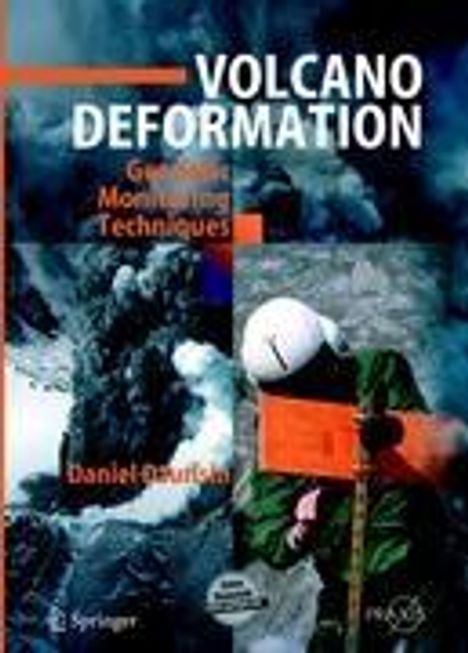Daniel Dzurisin: Volcano Deformation, Gebunden
Volcano Deformation
- New Geodetic Monitoring Techniques
(soweit verfügbar beim Lieferanten)
- Verlag:
- Springer Berlin Heidelberg, 09/2006
- Einband:
- Gebunden, HC runder Rücken kaschiert
- Sprache:
- Englisch
- ISBN-13:
- 9783540426424
- Artikelnummer:
- 7703548
- Umfang:
- 480 Seiten
- Nummer der Auflage:
- 2007
- Ausgabe:
- 2007
- Copyright-Jahr:
- 2006
- Gewicht:
- 1374 g
- Maße:
- 279 x 203 mm
- Stärke:
- 32 mm
- Erscheinungstermin:
- 14.9.2006
- Hinweis
-
Achtung: Artikel ist nicht in deutscher Sprache!
Weitere Ausgaben von Volcano Deformation |
Preis |
|---|---|
| Buch, Kartoniert / Broschiert, Paperback, Englisch | EUR 164,28* |
Klappentext
Volcanoes and eruptions are dramatic surface man telemetry and processing, and volcano-deformation ifestations of dynamic processes within the Earth, source models over the past three decades. There has mostly but not exclusively localized along the been a virtual explosion of volcano-geodesy studies boundaries of Earth's relentlessly shifting tectonic and in the modeling and interpretation of ground plates. Anyone who has witnessed volcanic activity deformation data. Nonetheless, other than selective, has to be impressed by the variety and complexity of brief summaries in journal articles and general visible eruptive phenomena. Equally complex, works on volcano-monitoring and hazards mitiga however, if not even more so, are the geophysical, tion (e. g. , UNESCO, 1972; Agnew, 1986; Scarpa geochemical, and hydrothermal processes that occur and Tilling, 1996), a modern, comprehensive treat underground - commonly undetectable by the ment of volcano geodesy and its applications was human senses - before, during, and after eruptions. non-existent, until now. Experience at volcanoes worldwide has shown that, In the mid-1990s, when Daniel Dzurisin (DZ to at volcanoes with adequate instrumental monitor friends and colleagues) was serving as the Scientist ing, nearly all eruptions are preceded and accom in-Charge of the USGS Cascades Volcano Observa panied by measurable changes in the physical and tory (CVO), I first learned of his dream to write a (or) chemical state of the volcanic system. While book on volcano geodesy.

